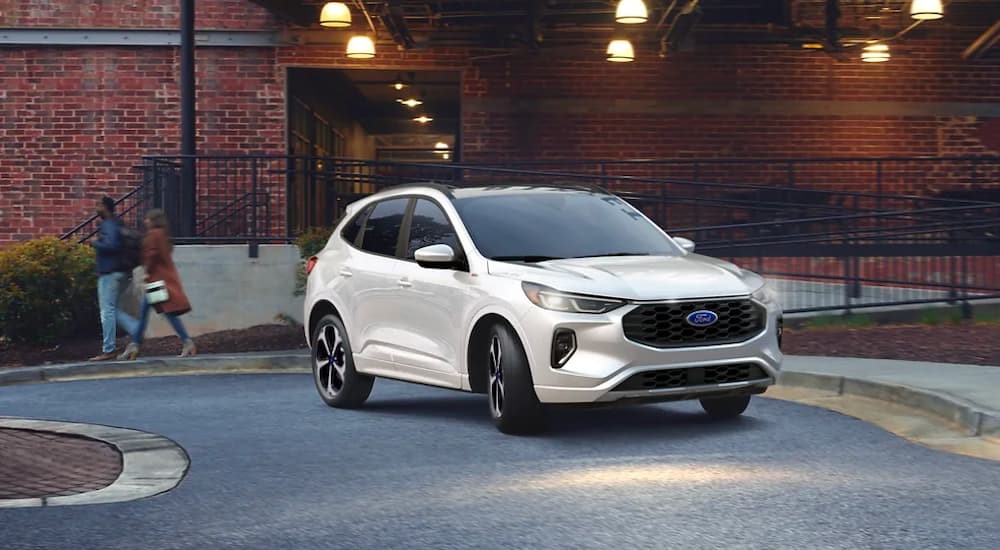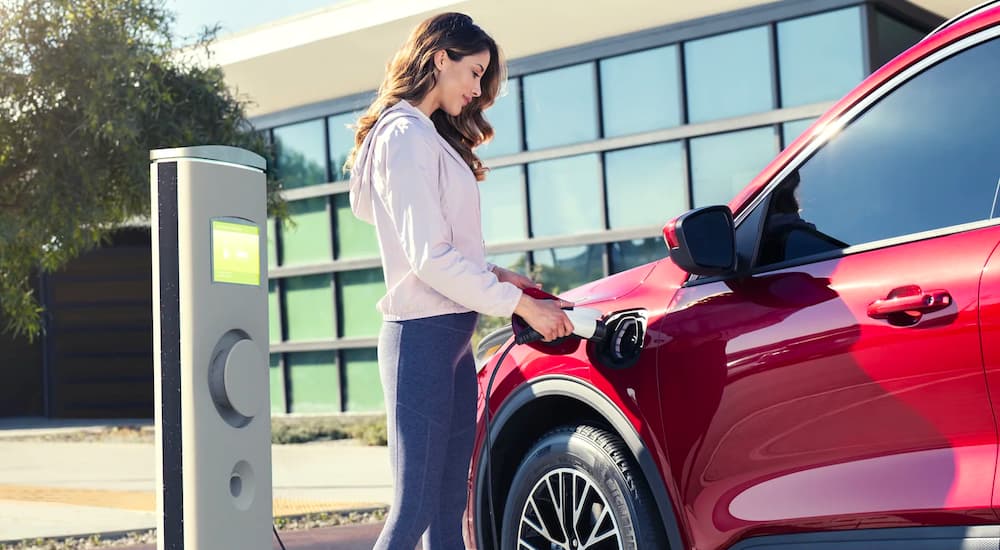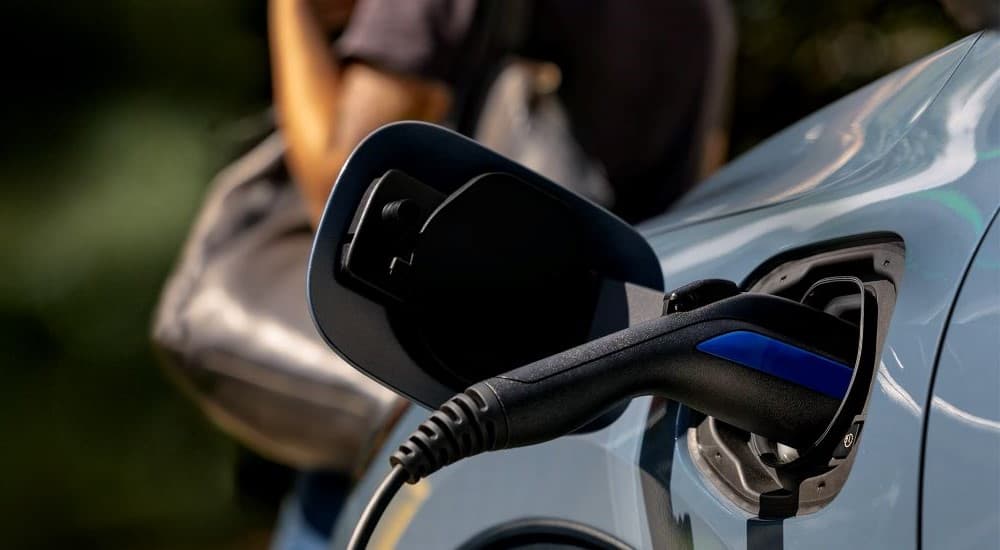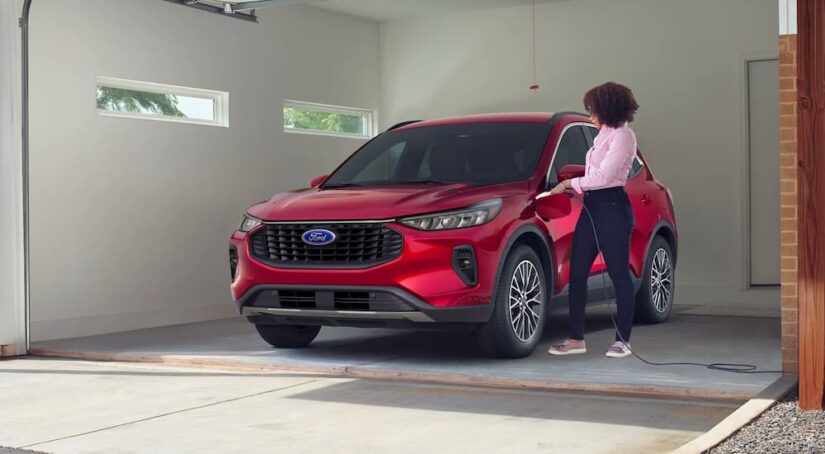With gas prices constantly fluctuating, you might be looking for ways to save money on fuel, especially as the days get warmer and the call for a road trip becomes stronger. If you’re looking for a Ford Escape for sale, you already know that it provides optimum comfort and safety, but do you know how to maximize fuel efficiency? Keep reading to learn some tips and tricks that will improve the fuel efficiency to the next level.

The Importance of Fuel Efficiency
The main reason most of us think of for fuel efficiency is to save money at the gas pump. While this is true, there’s the bigger picture to consider as well. Fossil fuels like gasoline, oil, and natural gas are limited resources. We will run out of them if we don’t use them efficiently. One way to ensure these resources last as long as possible is by using less fuel.
Fuel efficiency also helps the environment because greenhouse gases are one of the leading causes of climate change, and cars that use less fuel produce fewer of these gases. By making more fuel efficient vehicles, manufacturers can help reduce the amount of greenhouse gases that gets into the air. This reduction will slow down climate change.
The task of increasing fuel efficiency has pushed researchers to come up with new ideas and improve technology, especially as more people want cars that use less gas. Since manufacturers have started focusing more on this task, the automotive industry has created new teams and technology to master efficiency, leading to new jobs and economic growth.
By making cars that use less fuel, manufacturers help you save money, protect the earth, save natural resources, and encourage innovation and technological progress. In other words, fuel efficiency is more than just saving you money at the pump. It’s a goal that affects people, companies, and society in many ways.
Fuel Efficiency and the 2023 Ford Escape
Ford offers two fuel efficient EcoBoost engines in the Escape, as well as a Hybrid and Plug-In Hybrid option. These choices give you a range of fuel efficiency that you might not get with other vehicles.
No matter which engine you choose, the 2023 Ford Escape aims to offer you an estimated range of 400 miles per tank. For the fully hybrid option, you can go more than 550 miles.
1.5L and 2.0L EcoBoost Engines
Both the 1.5L and the 2.0L EcoBoost engines help improve fuel efficiency with Ford’s Auto Start-Stop Technology. The Start-Stop Technology reduces fuel use by shutting off the engine when the car is stopped, such as at a red light. As you release the brake, the engine automatically starts again. The operation is seamless, and does not affect your driving. This is a perk if you drive in a lot of stop-and-go traffic.
The system will also start the system to maintain interior comfort or recharge the battery. You might experience this more often in warmer or colder conditions to help keep you and your passengers comfortable, or when you’re sitting in traffic for an extended time. This system is operational every time you start your vehicle. You can disable the system by following the instructions in your driver’s manual.
The Base and Active models of the 2023 Ford Escape offer the 1.5L EcoBoost Engine, while the 2.0L EcoBoost Engine is offered on the Platinum model. Both the 1.5L and 2.0L come in all-wheel drive or front-wheel drive. The 1.5L engine is rated for 30 miles per gallon combined in the front-wheel drive model and 28 in all-wheel drive, while the 2.0L gets 26 MPG with its all-wheel drive.

Hybrid and Plug-In Hybrid Options
Ford has offered SUV Hybrid options since 2005. Since then, they’ve researched and tweaked their brand to ensure they’re bringing you some of the best technology there is. Additionally, giving you two choices, rather than all-or-nothing, lets you control how you drive.
Both hybrid models come with a 2.5L Atkinson cycle hybrid engine with a continuously variable transmission. The standard Hybrid model is rated for 39 MPG combined in both front and all-wheel drive versions. As a standard hybrid vehicle, the gas engine is solely responsible for recharging the hybrid battery while you drive.
The Escape Plug-In Hybrid provides the option to plug it into a charger, just like a fully electric car, to top off the battery in between drives. This enables you to arrive home with a depleted battery, charge it up overnight, and continue driving on electric power rather than gas, further enhancing fuel economy. This choice also allows you to customize your driving experience by offering four EV modes.
Auto EV mode: Your Escape alternates between gas or electric power on its own.
EV Now mode: This mode forces the Escape into fully electric mode.
EV Later mode: This mode switches to gas-powered driving, but will re-enable the electric mode later.
EV Charge mode: The gas engine charges up the battery while driving. This mode prepares the vehicle to use the electric mode at another time.

Tips for Maximizing Fuel Efficiency
As noted above, the estimated fuel range for the 2023 Ford Escape is 400 to 550 miles depending on your model. To help you save the most money, you’ll need to know how to hit those top numbers consistently. Some tips to help you get the most from your Escape are listed below.
Change Your Oil Regularly
It is vital to keep your Escape well-maintained to ensure that its runs at peak performance. This includes scheduling regular oil changes. Discuss your choice of oil with the mechanics, as upgrading your motor oil can improve your fuel efficiency by as much as 1-2%.
Changing your oil regularly is essential as new oil provides vital lubrication to the engine, meaning friction is reduced and the engine parts work more efficiently. This efficiency helps you make fewer trips to the gas station.
Ford recommends using Motorcraft SAE 0W-20 Full Synthetic Motor Oil unless you have the Platinum model with a 2.0L EcoBoost Engine. In that case, they recommend Motorcraft SAE 5W-30 Synthetic Blend Motor Oil.
Check Your Tire Pressure
You might not realize it, but maintaining the correct tire pressure is important for fuel efficiency. The rolling resistance of your car’s tires is directly related to how much air is in them, which affects how much energy your car’s engine uses to move the vehicle forward.
When your tires are underinflated, the rolling resistance increases, making the engine work harder. As mentioned when discussing oil changes, when the engine has to work harder, it needs to burn more fuel to produce the same amount of power.
Keeping your car’s tire pressure at the recommended manufacturer specification is essential. Usually, you can find this information in the owner’s guidebook, on a sticker on the driver’s side door, or inside the door to the gas cap. Your tire pressure for the 2023 Ford Escape should be 35 PSI for all four tires.
Monitor Your Driving
Your driving habits also affect your fuel efficiency. Simple changes like maintaining a constant speed can improve fuel efficiency, since frequent acceleration and braking burn fuel more quickly. To help you maintain a constant speed, consider using cruise control more often, especially when driving on the expressway.
The same concept is seen in aggressive driving. When you accelerate quickly, only to brake suddenly as you’re zipping in and out of traffic, you can use up to 15% more fuel. Additionally, you can improve your fuel efficiency by using the highest gear possible. This lessens the workload on the engine and increases fuel efficiency.
Plan Your Trips Accordingly
Give yourself enough time to get where you’re going so you don’t have to rush and speed through traffic. You can also save both time and fuel by paying attention to traffic patterns and planning the best route. Planning accordingly lets you leave a few minutes earlier and beat the stop-and-go traffic on your morning commute.
The 2023 Ford Escape Gives You a Boost of Fuel Efficiency
The 2023 Ford Escape gives you excellent fuel efficiency with state-of-the-art technology and research. This is a great start when working to decrease your carbon footprint. From there, implement some of the tips listed above, and you will be well on your way to more money in your pocket and fewer trips to the gas station.



